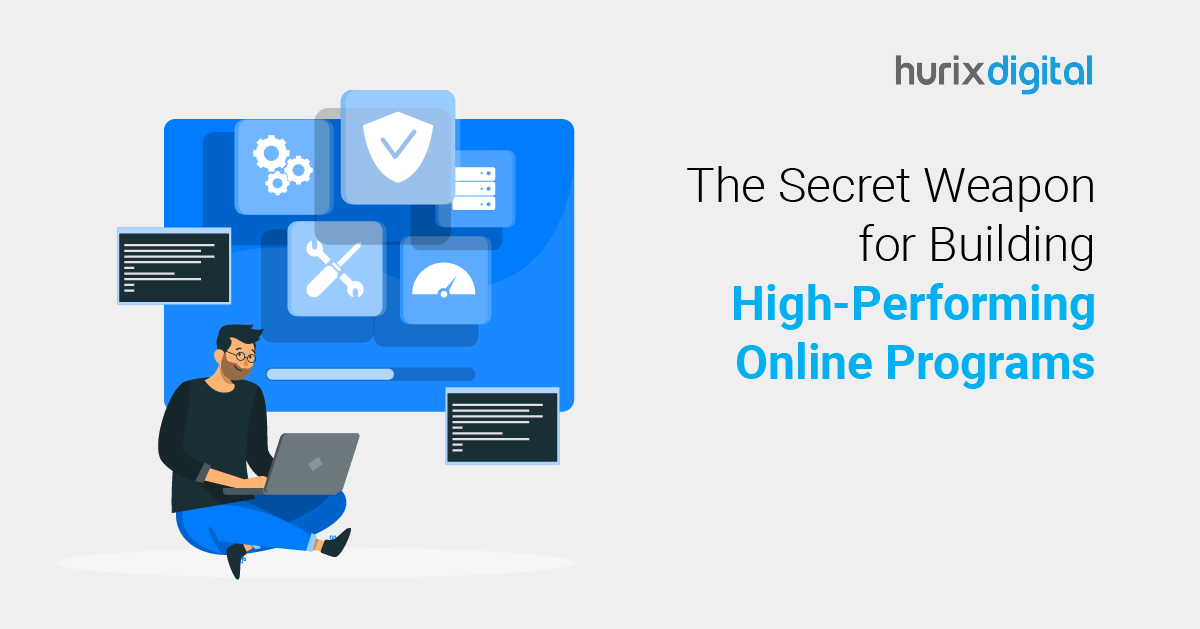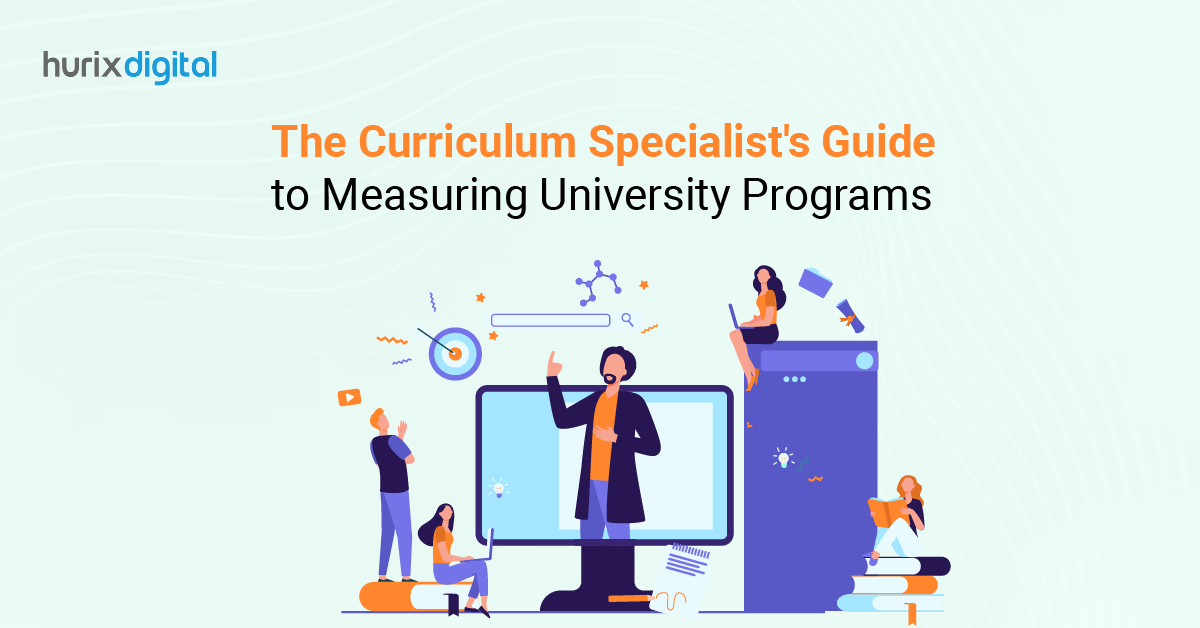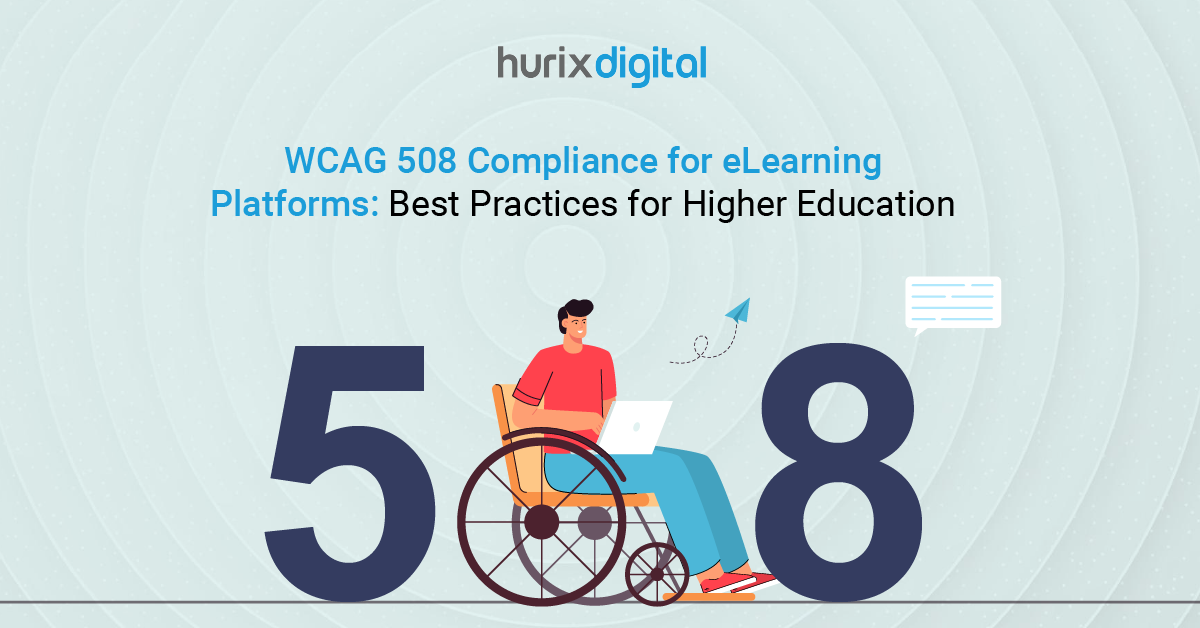
The Secret Weapon for Building High-Performing Online Programs
Summary
This article examines high-performing online education, emphasizing data-driven design, personalized learning, and mobile-optimized content to foster engaging, adaptive programs that improve outcomes.
Over the past five years, access to online educational programs has seen substantial growth.
Virtual schools have increased, while traditional schools and higher educational institutions are increasingly adopting hybrid education models. Universities have expanded their offerings to include online programs, and numerous learning platforms now provide a diverse array of courses.
Amidst the growing demand for high-quality online learning, the worldwide online education market is projected to grow to $270.32 billion by 2031. As more educators enter the online learning domain, only high-performing online programs can succeed in attracting and retaining learners.
In this blog, we deconstruct the factors that differentiate superior online learning programs and explore the secret behind building high-performing online courses. Read on!
Table of Contents:
- What are High-Performing Online Programs?
- Exploring the Secret to High-Performing Online Programs
- How to Create High-Performing Online Programs?
- Wrapping Up
What are High-Performing Online Programs?
High-performing online programs refer to courses that boost learning effectiveness and produce superior learning outcomes.
Here are some key parameters that must be met:
- Learners absorb knowledge and understand concepts faster and more clearly.
- Learners can retain knowledge for extensive periods as they are clear on the fundamentals.
- Learners have access to customized learning experiences based on their proficiency in the subject.
- The programs are inclusive and accessible to audiences with diverse limitations and learning preferences.
- Alongside growing their subject knowledge, learners build hands-on skills, which are important for them to succeed in the world of work.
- Learners can benefit through community support, which increases online student engagement, enables networking, and facilitates mentorship.
- The program comes with an ecosystem that enables learners to continue increasing their knowledge and skills, making learning a lifelong journey.
Also Read: Unlock the True Potential of AI Data Analytics in Higher Education
Exploring the Secret to High-Performing Online Programs
The secret to high-performing online program development is not one but a set of best practices that collectively elevate the standard of programming.
We break down these practices as follows:
1. Data-Driven Program Design and Execution
Data will play an important role in high-performing online programs. Today, educators have access to an extensive amount of data, from learner behaviors, learning preferences, and engagement rates to enrollment trends and a student’s past data.
By processing, analyzing, and interpreting data effectively, educators can program future-proof learners in a dynamic skills landscape.
The use of predictive analytics allows educators to be strategic in the design and execution of content and resources, thus building truly differentiated programs. Educators can also adopt a data-driven digital curriculum design approach so that programs keep pace with new developments in the world of work.
2. Personalized Learning Pathways
Digital learning solutions, such as personalization of learning, enable learners to go at a pace that is aligned with their proficiency level.
By leveraging data analytics and machine learning, educators and online learning program leaders can automate and enhance the personalization of learning experiences. This approach swiftly develops individualized learning pathways, focusing more on addressing learners’ weak areas efficiently.
This process makes it easy for learners to dedicate more time and effort to weaker areas and practice more. In turn, they are more likely to master these areas than via a standardized learning pathway.
3. Mobile-first Learning Capabilities
Between 2024 and 2029, the world will add 1.5 billion new smartphone users, taking the estimated reach of smartphones to 6.4 billion users. These numbers indicate that the smartphone will increasingly grow in popularity as a device of choice for learning.
As smartphone usage continues to rise globally, optimizing online programs for mobile devices becomes crucial. This approach enhances flexibility, convenience, and accessibility for learners, fostering a seamless learning experience.
4. Accessible Content & Communication
Programs that adhere to Web Content Accessibility Guidelines (WCAG) can be effective in serving the needs of a wide range of learners. WCAG guidelines ensure that learners can overcome barriers and access equal learning opportunities.
The use of sub-titles in videos, ALT-TEXT for images, read-aloud, video transcripts, and the ability to adjust font size and style are some examples of how content can be made accessible and inclusive.
5. Nudge Students towards Self-Learning
The best programs inspire students to invest more time in self-learning. When learners are motivated to engage in the subject matter independently, they expand their imagination and prepare themselves for the world of work. There are several strategies to promote self-learning.
Here are some examples:
- Create and publish a digital library of on-demand multimedia resources that are engaging and accessible.
- Gamify learning by introducing challenges, rewards, and leaderboards, which nudge learners to keep engaging.
- Harness technologies such as Virtual Reality and Augmented Reality to generate simulated, real-world-like live experiences that nudge learners to develop practical skills in diverse conditions.
6. Curation of a Lifelong Learning Ecosystem
As older job roles become redundant and new ones evolve, learners need an ecosystem around courses so they can continue learning and stay relevant.
Elements such as peer-to-peer and alumni communities, mentorship, and services such as resume and interview support play a transformative role in a learner’s journey. The use of cloud-based, AI-powered, and automated learning management solutions (LMS) can help educators build, maintain, and evolve a supportive, vibrant, and robust ecosystem. This approach is vital for virtual classroom success.
How to Create High-Performing Online Programs?
Here’s how you can achieve success in online education through high-performing programs:
- Establish Specific Learning Outcomes for Your Program: To begin, make sure your learning objectives are clear and in line with the requirements of both the industry and learners.
- Employ Data Insights: Make use of data analytics to comprehend learner preferences and habits, which will inform content production and distribution tactics.
- Design Engaging Content: To improve learner engagement and retention, provide multimedia-rich, interactive content.
- Execute Robust Assessment: Create reliable evaluation techniques to track learning advancement and guarantee that important ideas are mastered.
- Encourage Collaboration: Through forums, group projects, and online learning environments, encourage peer communication and cooperation.
- Continuous Improvement: Keep an eye on program efficacy using analytics and feedback, and make constant improvements to content and delivery to achieve the best possible outcomes.
By integrating these strategies, online education programs can enhance engagement, promote effective learning outcomes, and adapt to the evolving needs of learners and industries.
Check out EXCLUSIVE: Harnessing the Power of Tech-Infused Education – Students and Educators Alike
Wrapping Up
Today, educators are focused on improving course quality and relevance for learners while maintaining cost efficiency. Embracing best practices like cloud computing, automation, and AI early on can greatly support these efforts.
Hurix Digital excels in facilitating this transformation. With innovative solutions tailored to enhance educational outcomes, we empower educators to thrive in the digital age.
Want to learn more? Connect with us now!

Senior Vice President
A Business Development professional with >20 years of experience with strong capability to sell new solutions and develop new markets from scratch. New Market Entry Specialist with experience of working in two of the largest emerging markets – China & India. Also covered other key markets in APAC, US, EU & ME. Exceptional experience of conceptualizing, ideating and selling new learning technologies like VR AR, etc. across multiple industry verticals.








